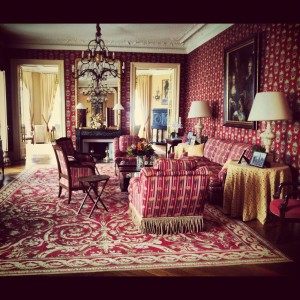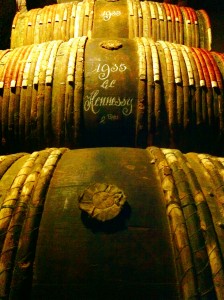Put on your fancy pants and drink some cognac
18 Jul
An aged eau de vie at heart, a brandy in spirit, cognac adds a different sort of mystique to the table. Cognac is brandy’s sophisticated and worldly cousin. It is known around the world as a spirit drunk by millionaires and bon vivants. This cultivated image is owed, for the most part, to the Bureau National Interprofessionnel du Cognac (BNIC). This organization, established in 1946, enforces the rules and regulations implemented for cognac production, as well as the promotion of the spirit worldwide. Right now, 97% of all cognac is exported to foreign markets: the top three importers being the United States, Singapore, and China. It is safe to say that without the BNIC, there would not be such a vast, worldwide market for cognac.
Part of what makes the marketing of cognac so successful is its perceived image of timeless quality. It is a luxury good, a symbol of status and wealth, much like a designer handbag or a sports car. Unlike these other luxury goods, however, fine cognac is accessible to more than just the one percent. In any US liquor store, there will inevitably be bottles of Hennessy VS on the shelf for a few dollars more than the mid-range brandy next to it, but it’s not unheard-of for bottles of Cognac to range from $30 to $30,000 in the same store. Point being, cognac is accessible to, and marketed to, almost every drinker, from the budget-conscious to moneyed elites. Unlike other spirits, even the cheapest cognac is regarded and sophisticated to the average consumer. Claire Coates, the BNIC’s director of communications, talks about the challenges of marketing cognac worldwide: “Cognac has always been considered to be a serious product. But it is also important to be accessible, so we must offer accessibility without losing our soul, or identity; producers are looking to fit their products into this trend. Society is changing; people want more fun in their lives. Showing cognac as seductive, as fashionable and sensual, means it is seen as a pleasure.”(1)
Recently, larger cognac companies are capitalizing on society’s need for fun, fashion, and pleasure. Hennessy’s current U.S. ad campaign, “What’s your wild rabbit,” featuring work by Martin Scorsese and Futura, focuses on unleashing the passions of its consumers, old and young alike. Courvoisier is currently promoting its new products, C and Rose, the former being a lighter-bodied cognac made for mixing, the latter a liqueur consisting of cognac and rose wine. Pierre Ferrand, while remaining true to its legacy, just released their 1840 Original Formula cognac, a higher proof, full-bodied cognac ideal for cocktails. Almost every cognac company is following a similar path, seizing the opportunity to cater to the young and the young at heart.
While cognac is still something that is deeply rooted in tradition and history, it is branching out into new and uncharted territory. The BNIC is now presented with the challenge of representing cognac in two different ways: the conventional and the fashionable. In the United States, change is the only constant, however, cognac’s more customary aspects shine in other countries’ markets. Along with the help of individual cognac companies, the BNIC showcases the incredible versatility of cognac. While marketing in the United States may be geared toward a new order, it is cognac’s rich history that sets it apart from other spirits. Whether you’re sitting under laser light in a night club or candlelight in a yacht club, the contents of one’s glass are an expression of heritage and terroir, the remnants of a hundreds-year old tradition, with a dash of character from the cellar masters and distillers.




No comments yet